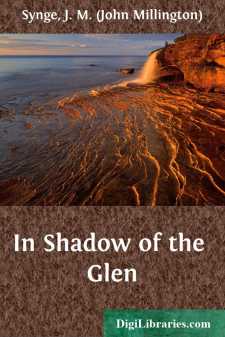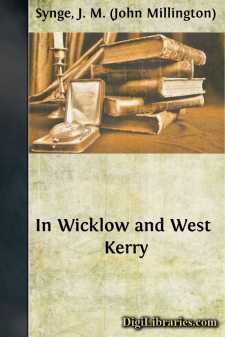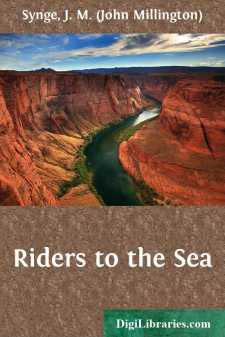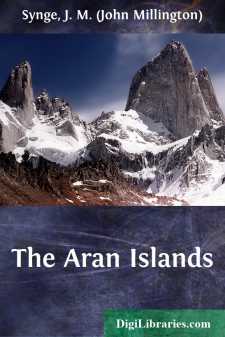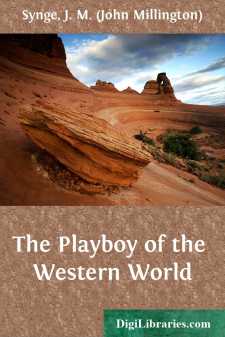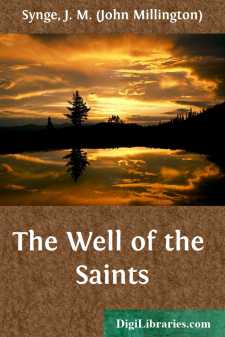Categories
- Antiques & Collectibles 13
- Architecture 36
- Art 48
- Bibles 22
- Biography & Autobiography 813
- Body, Mind & Spirit 142
- Business & Economics 28
- Children's Books 15
- Children's Fiction 12
- Computers 4
- Cooking 94
- Crafts & Hobbies 4
- Drama 346
- Education 46
- Family & Relationships 57
- Fiction 11828
- Games 19
- Gardening 17
- Health & Fitness 34
- History 1377
- House & Home 1
- Humor 147
- Juvenile Fiction 1873
- Juvenile Nonfiction 202
- Language Arts & Disciplines 88
- Law 16
- Literary Collections 686
- Literary Criticism 179
- Mathematics 13
- Medical 41
- Music 40
- Nature 179
- Non-Classifiable 1768
- Performing Arts 7
- Periodicals 1453
- Philosophy 64
- Photography 2
- Poetry 896
- Political Science 203
- Psychology 42
- Reference 154
- Religion 513
- Science 126
- Self-Help 84
- Social Science 81
- Sports & Recreation 34
- Study Aids 3
- Technology & Engineering 59
- Transportation 23
- Travel 463
- True Crime 29
J. M. (John Millington) Synge
John Millington Synge was an Irish playwright, poet, and prose writer, best known for his play "The Playboy of the Western World," which caused riots when first performed in Dublin in 1907. Born in 1871, Synge was a key figure in the Irish Literary Revival, collaborating with luminaries like W.B. Yeats and Lady Gregory. His works often depict the rural Irish life and combine realism with poetic language, reflecting the complexities of Irish society and folklore.
Author's Books:
Sort by:
IN THE SHADOW OF THE GLEN A PLAY IN ONE ACT SCENE.—{The last cottage at the head of a long glen in County Wicklow. Cottage kitchen; turf fire on the right; a bed near it against the wall with a body lying on it covered with a sheet. A door is at the other end of the room, with a low table near it, and stools, or wooden chairs. There are a couple of glasses on the table, and a bottle of whisky, as if...
more...
The Vagrants of Wicklow Some features of County Wicklow, such as the position of the principal workhouses and holiday places on either side of the coach road from Arklow to Bray, have made this district a favourite with the vagrants of Ireland. A few of these people have been on the roads for generations; but fairly often they seem to have merely drifted out from the ordinary people of the villages,...
more...
INTRODUCTION It must have been on Synge's second visit to the Aran Islands that he had the experience out of which was wrought what many believe to be his greatest play. The scene of "Riders to the Sea" is laid in a cottage on Inishmaan, the middle and most interesting island of the Aran group. While Synge was on Inishmaan, the story came to him of a man whose body had been washed up on...
more...
Part I I am in Aranmor, sitting over a turf fire, listening to a murmur of Gaelic that is rising from a little public-house under my room. The steamer which comes to Aran sails according to the tide, and it was six o'clock this morning when we left the quay of Galway in a dense shroud of mist. A low line of shore was visible at first on the right between the movement of the waves and fog, but when...
more...
ACT I. SCENE: [Country public-house or shebeen, very rough and untidy. There is a sort of counter on the right with shelves, holding many bottles and jugs, just seen above it. Empty barrels stand near the counter. At back, a little to left of counter, there is a door into the open air, then, more to the left, there is a settle with shelves above it, with more jugs, and a table beneath a window. At the...
more...
ACT I [Roadside with big stones, etc., on the right; low loose wall at back with gap near centre; at left, ruined doorway of church with bushes beside it. Martin Doul and Mary Doul grope in on left and pass over to stones on right, where they sit.] MARY DOUL. What place are we now, Martin Doul? MARTIN DOUL. Passing the gap. MARY DOUL — [raising her head.] — The length of that! Well, the sun's...
more...


